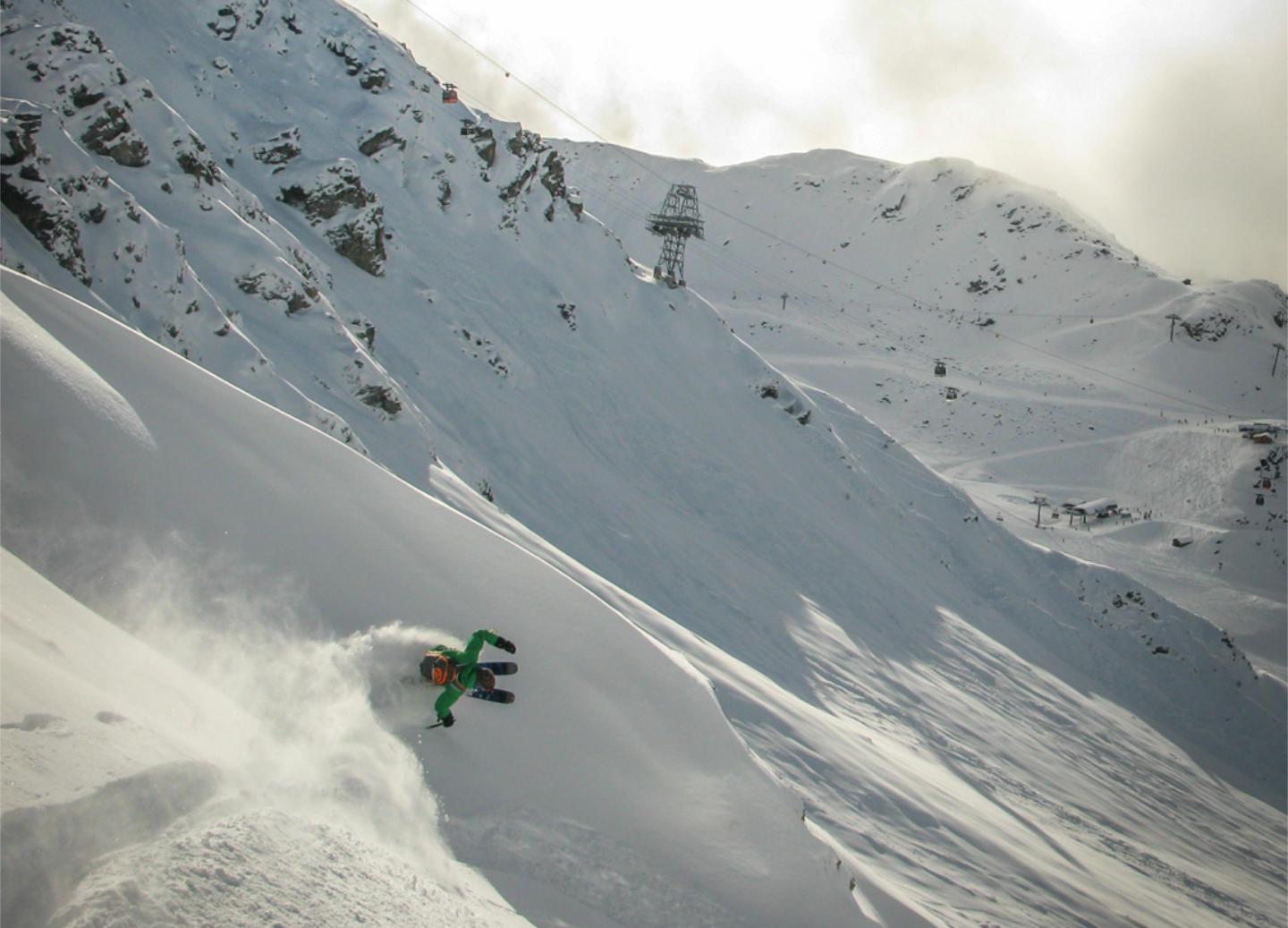Hawaiian-born Hans first came to Verbier 25 years ago. He fell in love with the skiing and went onto be one of the first foreigners to complete his Swiss Mountain Guide Exam. He lives here with his wife and 2 children.
You never know how or when the season is going to start. But one thing is for sure: there probably won’t be a solid base of snow. Rocks will be lurking just underneath the surface, waiting to ruin your skis, or worse – you.
Knowing what the ground is like at this early stage is a big help. Much of the terrain we ski over is grass, which means we can ski on just 30cm of fresh powder with a nice fat pair of rock skis without doing too much harm to them – or us.
Lower altitudes, below 2’300m for example, generally have fewer rocks and are therefore better suited to early winter skiing. There is usually more snow at altitude, so you need to be able to wiggle in and out of the rocky areas.
The Creblet run is a fine example where one minute you may get down it trouble-free, and the next minute you completely ruins your skis. The top is really rocky, so it’s best to go in easy and avoid the bumps, which are actually rocks. After this you’ll encounter a relatively rock-free line: down the initial throat, bearing slightly left, and then straight down; just avoid crashing into one of the many new chalets in town – which may have appeared overnight – right in the middle of your favorite run home.
Be sure to save an old pair of skis to use during the first couple of weeks of off-piste skiing in Verbier. Getting familiar with the terrain, and finding out where the rocks is best done on an old pair of skis – not to mention lighter on your wallet. Stay on top of the skis and don’t practice that “hip smear” technique this early in the season.
On the other hand, rain can fall high on the mountain at the start of the season. This rain, on top of a meter of snow, creates a solid shell over the ground rocks allowing free run off-piste skiing.
The ideal start to the winter season is lots of early snow.
This creates an insulating layer keeping the warm ground far away from the cold surface layers resulting in a stable snow pack for the rest of the winter.
What often happens however, is small amounts of snow fall in October and November. Cold nights and no sun on the north-facing slopes create a very high “temperature gradient”. This is just a fancy way to say there is a big difference between the type of snow on the ground and the type of snow at the surface.
In these conditions, the snow crystals grow quickly into angular globs, similar to the raw sugar I buy at the Migros supermarket. The snow is big grained stuff, which when covered with another layer of snow, offers virtually no support for the added weight. All it needs is some clown like me to come along and set it off, and bingo, I’m under two metres of snow hoping my friends have read up on transceiver rescue techniques. Not a great place to be, and better to stay home if you think you may end up in such a precarious situation.
The wild waterfalls past Fionnay, in the upper reaches of the Val de Bagnes, provide a superb environment for Waterfall sport climbing.
Our very own Val de Bagnes offers some of the finest ice climbs in the Alps. The first time I did one, it felt like I had walked into Mom’s kitchen, opened the cupboards, started pulling out glasses and throwing them all over the room. Glass was exploding with every axe placement, flying through the air, and crashing all around me. I kicked gleefully at the ice, destroying everything around me with my crampons. What a great way to pass the time on a calm, peaceful, alpine day in Verbier!
Progress up these vertical frozen waterfalls is assured with ropes and screws placed in the ice. Choosing the right time and the right place provides excellent entertainment, and perhaps even addiction for a new and cool lifestyle. Be sure to leave all those screws hanging off your belt when you swagger into the Pub Mt.Fort for the after-climb brew. The girls will certainly put you on their immediate “to do” list. But be sure to remove the crampons…
The ‘Guide des Cascades de Glace en suisse romande’ by Bob Rodzinski is a good guide book, covering most of the climbs this part of Switzerland.

